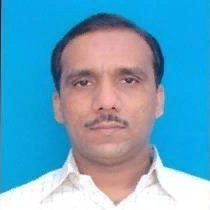
Bal Krishan
Work place: M.Tech.(Nanotechnology), Electronics Engineering Department. YMCA UST, Faridabad-121006, India
E-mail:
Website:
Research Interests: Processor Design, Software Design, Interaction Design
Biography
Bal krishan received his B.E. degree in Electronics & Communication Engineering from CRSCE (Now Govt. University), Murthal (Sonepat), Haryana in 1997 and M.TECH. degree in Nanotechnology from JMI, Delhi in 2009 respectively. During 2007-2009, he stayed in Materials Science Laboratory, Jamia Millia Islamia, N.Delhi to study synthesis, characterization, I-V studies and field emission properties of carbon nanotube. He has supervised 10 M.Tech. and many B.Tech. projects. He has published many papers in various National & International conferences / journals. He is pursuing Ph.D in the field of Nano electronics from YMCA UST, Faridabad (Haryana). Presently he is working as Assistant Professor in Electronics Engineering Department. YMCA UST, Faridabad. Research Interests: Nano electronics & devices, VLSI Design, Electronics Engg.
Author Articles
Comparative Analysis of Various SRAM Cells with Low Power, High Read Stability and Low Area
By Abhishek Agal Pardeep Bal Krishan
DOI: https://doi.org/10.5815/ijem.2014.03.01, Pub. Date: 18 Dec. 2014
SRAMs are very important part of today's movable devices like laptops and mobile phones. Different SRAM cells of different number of transistors have their own respective advantages and drawbacks. In this work an attempt has been made to reduce the leakage power by adding some transistors. Each SRAM cell provides an efficient way to reduce the leakage power, but disadvantage of each SRAM cell limit the application of them.
In this paper, the study and transient analysis on four different SRAM cells has been carried out and compared with respect to various parameters like power dissipation, delay and area. The simulation is carried out in 180nm CMOS technology using tanner tools. Layout is carried out using microwind.
Other Articles
Subscribe to receive issue release notifications and newsletters from MECS Press journals